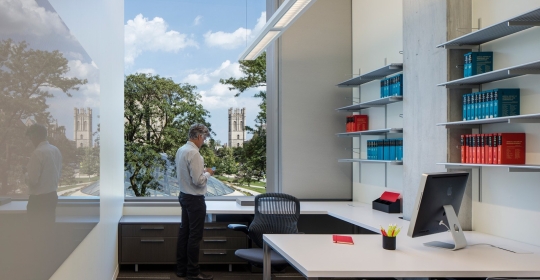Lehigh University
Skyline Design collaborated with artist Larry Kirkland to produce two significant etched glass installations for Lehigh University’s STEPS center. These included a massive curtain wall measuring 70 x 20 feet and a large window of 15 x 22 feet. These installations, comprising 28 and 12 glass panels respectively, were designed to embody the mission of the center, marking the largest single-image projects ever undertaken by Skyline Design.
Technique: Eco-Etch Glass
Application: Exterior Glass
Pattern type: Nature-inspired
Market: Exteriors
Artist: Bohlin Cywinski Jackson Architects
Artwork: Larry Kirkland
Photography: Craig Collins
Location: Bethlehem, Pennsylvania, USA
Architecture & Design Firms: Bohlin Cywinski Jackson Architects


